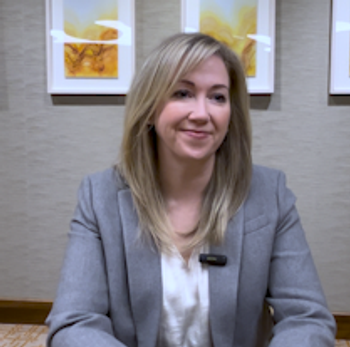
Revised AAP guidelines address simple febrile seizures in children
Clinical evaluation of simple febrile seizure in infants and young children aged 6 months to 5 years should focus on identifying the source of the child?s fever, according to updated practice guidelines released by the American Academy of Pediatrics (AAP).
Clinical evaluation of simple febrile seizure in infants and young children aged 6 months to 5 years should focus on identifying the source of the child’s fever, according to updated practice guidelines released by the American Academy of Pediatrics (AAP).
The guidelines on simple febrile seizure, published in Pediatrics, replace the practice parameter released in 1996. The AAP conducted a review of evidence-based literature from 1996 to February 2009. The original practice parameter included a review of approximately 200 journal articles. Some 372 additional articles were reviewed for the updated guidelines.
The new guidelines provide recommendations on when to perform a lumbar puncture, an electroencephalogram (EEG), blood work, and neuroimaging. In general, further evaluation of a simple febrile seizure is not required.
The updated guidelines state that lumbar puncture should be performed when a child with a seizure and fever also has symptoms that suggest meningitis. These symptoms include neck stiffness and Kernig and/or Brudzinski signs.
A lumbar puncture is an option if an infant aged 6 to 12 months has a seizure and fever but has not received the recommended immunizations for Haemophilus influenzae type b (Hib) or Streptococcus pneumoniae or if his or her immunization status can’t be determined. Lumbar puncture also should be considered when a child with a seizure and fever has been pretreated with antibiotics, because antibiotics can mask the signs and symptoms of meningitis but may not be sufficient to eradicate it.
If it has been decided to perform a lumbar puncture, blood culture and serum glucose testing should be conducted concurrently to determine whether the hypoglycorrhachia characteristic of bacterial meningitis is present.
The guidelines also state that an EEG does not need to be performed when evaluating a neurologically healthy child who presents with a simple febrile seizure.
Measuring serum electrolytes, calcium, phosphorus, and magnesium or complete blood count or blood glucose should not be routinely performed for determining the cause of a simple febrile seizure. Likewise, neuroimaging is not necessary when evaluating a simple febrile seizure in a child.
The guidelines do not apply to patients with complex febrile seizures or to children who have had prior neurologic insults, central nervous system abnormalities, or a history of afebrile seizures.
Subcommittee on Febrile Seizures. Neurodiagnostic evaluation of the child with a simple febrile seizure. Pediatrics. 2011;127(2):389-394.
Newsletter
Access practical, evidence-based guidance to support better care for our youngest patients. Join our email list for the latest clinical updates.








